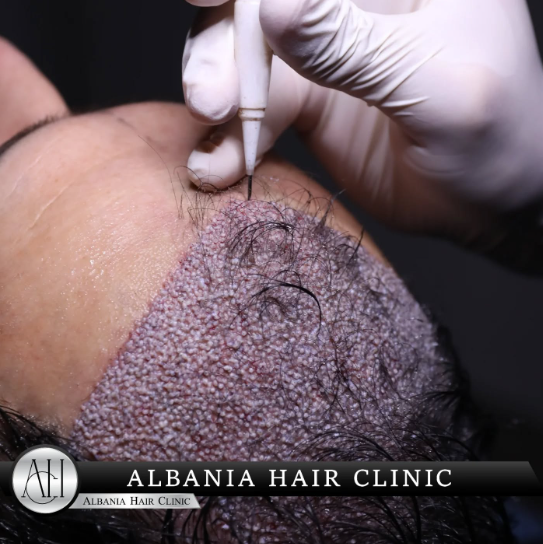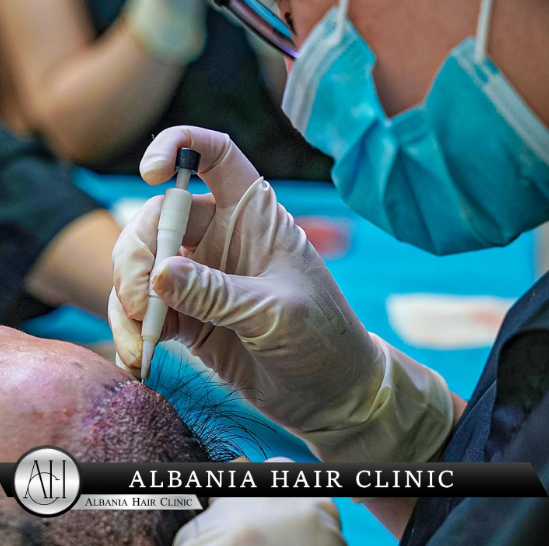Hair loss can feel devastating, especially for women, as hair often symbolizes femininity and self-expression. While many associate hair transplants with men, more women are turning to this transformative solution. This blog will dive into the causes of hair loss, highlight the benefits of hair transplant for women, and explain the steps involved in reclaiming a fuller, natural-looking head of hair.
Understanding Hair Loss in Women
Hair loss affects women differently than men. For instance, men often experience receding hairlines or bald spots, while women usually deal with diffuse thinning across the scalp.
Common Causes of Hair Loss in Women
- Hormonal Changes
Hormonal shifts during pregnancy, menopause, or conditions like polycystic ovary syndrome (PCOS) often lead to hair thinning or shedding. - Genetic Factors
Many women inherit female pattern hair loss (androgenetic alopecia), a common condition that affects millions worldwide. - Stress and Lifestyle
Chronic stress, an unhealthy diet, and poor sleep habits frequently trigger telogen effluvium, a condition causing temporary hair shedding. - Medical Conditions
Hair loss can also stem from thyroid disorders, anemia, or autoimmune diseases such as alopecia areata. - Hair Styling Practices
Using excessive heat styling tools, chemical treatments, or tight hairstyles often causes traction alopecia, a type of hair loss resulting from physical stress on hair follicles.
Why Hair Transplant Is a Game-Changer for Women
Hair transplants provide a permanent and natural-looking solution for women facing significant hair loss. Thanks to modern advancements, the procedure has become more effective and accessible for female patients.
Natural Results
Techniques like Follicular Unit Extraction (FUE) and Direct Hair Implantation (DHI) ensure that transplanted hair seamlessly blends with existing strands, creating realistic outcomes.
Customized Treatment Plans
Each procedure is tailored to match an individual’s unique hair loss pattern, facial structure, and aesthetic preferences, ensuring personalized results every time.
Minimal Scarring
With methods such as FUE and DHI, surgeons extract individual hair follicles, which significantly reduces visible scarring and allows for versatile hairstyles.
Hair Transplant Techniques
1. Follicular Unit Extraction (FUE)
FUE involves removing individual hair follicles from a donor area, typically at the back of the scalp, and implanting them into thinning or balding spots. This technique is precise and comes with a shorter recovery time.
2. Direct Hair Implantation (DHI)
DHI utilizes a specialized tool that extracts and implants hair follicles simultaneously. As a result, this method provides excellent control over the angle, depth, and direction of implantation, leading to highly natural results.
3. Follicular Unit Transplantation (FUT)
FUT involves removing a strip of scalp skin containing hair follicles, which are then dissected into individual grafts. While less commonly used for women, this method works well for cases requiring a larger number of grafts.
Who Is the Right Candidate for a Hair Transplant?
Not every woman experiencing hair loss is an ideal candidate for a hair transplant. A specialist evaluation ensures you receive the most effective treatment.
Ideal Candidates
- Women with localized thinning or specific bald patches.
- Individuals with enough healthy donor hair in unaffected areas.
- Patients with realistic expectations about the process and results.
Non-Ideal Candidates
- Women experiencing diffuse hair loss across the entire scalp, including donor areas.
- Those with medical conditions causing ongoing hair loss that haven’t been addressed or stabilized.
The Hair Transplant Process
Hair transplant procedures are highly systematic, ensuring precision and patient comfort at every step.
1. Consultation and Diagnosis
The journey begins with an in-depth consultation. During this session, a specialist assesses your hair loss pattern, discusses your goals, and recommends a suitable treatment plan.
2. Preparing for Surgery
Before the procedure, the donor and recipient areas are carefully marked. Depending on the chosen technique, hair may be trimmed, though DHI often allows for a no-shave option.
3. Undergoing the Procedure
Once the areas are prepped, the surgeon extracts and implants hair follicles. This process, performed under local anesthesia, usually lasts several hours based on the number of grafts needed.
4. Post-Operative Care
After the procedure, you’ll receive clear aftercare instructions, including tips on gentle washing, medications to prevent infection, and activities to avoid during the healing process.
What to Expect During Recovery
Recovering from a hair transplant is straightforward, with minimal discomfort for most patients.
Recovery Timeline
- First Week: Minor redness or swelling in treated areas is normal.
- 2-3 Weeks: Transplanted hair may shed temporarily, a natural part of the process known as “shock loss.”
- 3-6 Months: You’ll start to notice new hair growth.
- 12 Months: Full results become visible, showcasing a thicker, healthier head of hair.
Tips for Long-Term Success
To maintain your results, adopt a balanced diet, avoid excessive use of heat styling tools, and consult your specialist for ongoing care or advice.
Debunking Myths About Hair Transplant for Women
Many misconceptions surround hair transplants, which can discourage women from considering this life-changing procedure.
1. Hair Transplants Are Only for Men
While men have historically been the primary recipients, modern techniques cater equally to women, with excellent results.
2. The Results Will Look Fake
Advanced techniques, like DHI and FUE, ensure natural-looking results that blend seamlessly with existing hair.
3. The Procedure Is Incredibly Painful
Thanks to local anesthesia, most patients experience little to no discomfort during the process.
Choosing the Right Clinic Matters
The success of your hair transplant depends significantly on the expertise of the clinic and surgeon. When selecting a provider, prioritize the following:
- Certified specialists with years of experience.
- Modern facilities equipped with cutting-edge technology.
- Positive testimonials and a portfolio of before-and-after results.
Clinics in Turkey, for instance, have gained a reputation for delivering exceptional hair transplant services at competitive prices, making them a popular choice for patients worldwide.
Empowering Women Through Hair Restoration
Hair loss can deeply affect a woman’s confidence and quality of life. A hair transplant doesn’t just restore lost hair—it restores self-esteem and a renewed sense of identity. By choosing an experienced clinic and addressing the root causes of hair loss, women can take a powerful step toward regaining their confidence and embracing their beauty.
If you’re ready to explore hair transplants, reach out to our expert team today. Let us guide you on the path to thicker, healthier hair and a brighter future!






